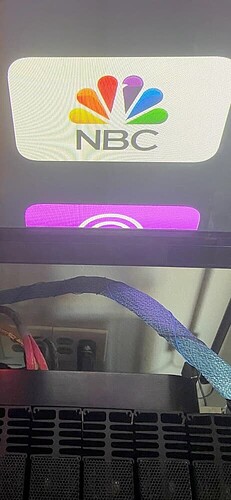Holy smokes, I gotta get back to work.
But see, that’s the problem. The video is not turned into light. Nor is it amplitude modulating the strength of an electron beam like in a CRT. The video is controlling the PWM engine. The pixel is on or it’s off, the ratio between on and off times is what determines the gray scale.
No, it’s not just on or off. Analog is continuous, digital isn’t. There has to be a place where things change from digital to analog. Noise modulates the PWM frequency, it modulates the PWM amplitude, etc. Those modulations matter at the point where things become analog. There’s nothing complicated here.
Ted, you are out of your field here. There is no traditional analog conversion taking place where routine electrical noise would have an effect. You think because the screen can display a range of brightness levels it must be done by a variable voltage.
It doesn’t work that way with modern display technology.
No, I’m not claiming there’s some sort of DAC (unless you count 1 bit conversion as a DAC.) It’s a simple continuity argument - somewhere things go from discontinuous (digital) to continuous - at that point it’s analog. The edges of a digital signal can’t transition instantly from zero to one. Whatever they are controlling can’t snap instantly on or off. Better quality video gear has more precise clocks, more precise power rails, quicker acting pixels, etc. But at some point you have to transition from digital to analog. That point is after the last time a clock touches the digital (since there will be nothing downstream to clean the edges back up again.) That point is before we see the video. That point is essentially the transition at the physical pixels.
“breakthrough”??? Not a chance.
I need to get back to comparing power cables. Just need to duct tape my dog to the couch and my head in the same listening position. Else if there’s a difference it didn’t happen according to audio science.
The other useful tidbit. Feed the Bear the south-end of the north-bound pointing dead horse first. So its lips are still moving until the last gulp.
Curious----what do you think about “audiophile” power cables?
I didn’t say it wasn’t. In fact, this phenomena is quite prevalent in our society.
Groupthink is the Grown-up Version of Peer Pressure. People tend to want to be part of the in crowd.
That is moire patterns from thin-film interference taking a picture of a screen. That is not noise!
It’s rather funny that you posted this. If you zoom in, this image is actually much cleaner, better contrast, sharper edges, but that has nothing to do with the TV and 100% with how the picture was taken. Oy vey.
The colors are washed out. What caused that?
Power cords, like everything else, make a difference. Every power cord I’ve tried sounds different. When selecting a power cord, or any other audio component, I look to increses the overall musicality.
It has been told to you many times that you don’t know how this works. Timing in HDMI is meaningless. It does not come into the discussion at all. Ground loops, nope.
Even for audio, timing is not necessary just a low pass filter on jitter. USB has no inherent jitter w.r.t. audio as everything today is async. Add any buffer to SPDIF, Toslink, etc. and the same is true.
The bits on the display may be theoretically analog, but effectively are digital in that locally developed timing immune to the HDMI is the predominant determinate of pixel value.
Time for another fresh batch:

Here’s my basic summary of the arguments and choices discussed in this thread. The folks in the ASR camp tell us that they have made all the measurements they need to assure us that a particular piece of audio equipment could not possibly improve the performance of an auditory (or visual) system. Some people on the PSA Forum say that they can hear a difference just by listening and that measurements don’t matter at all. A third group, possibly a majority on this forum, have enough experience to know that both measurements and listening are needed in the evaluation of audio gear.
Based on my own personal experience, I know that my audio equipment was designed by talented experts using both measurements and extensive listening. This group of exceptional designers/engineers includes Ted Smith, Bascom King, Darren Myers, and (the late) Jim Thiel. Choosing between the ASR “measurement only” approach and the “measure and listen” approach of my band of legendary audio designers, I’d simply tell the ASR folks (in the immortal words of Steve Goodman), “I ain’t never heard you play no blues.”

You are my hero!

I am beginning to miss Brodric… ![]()
